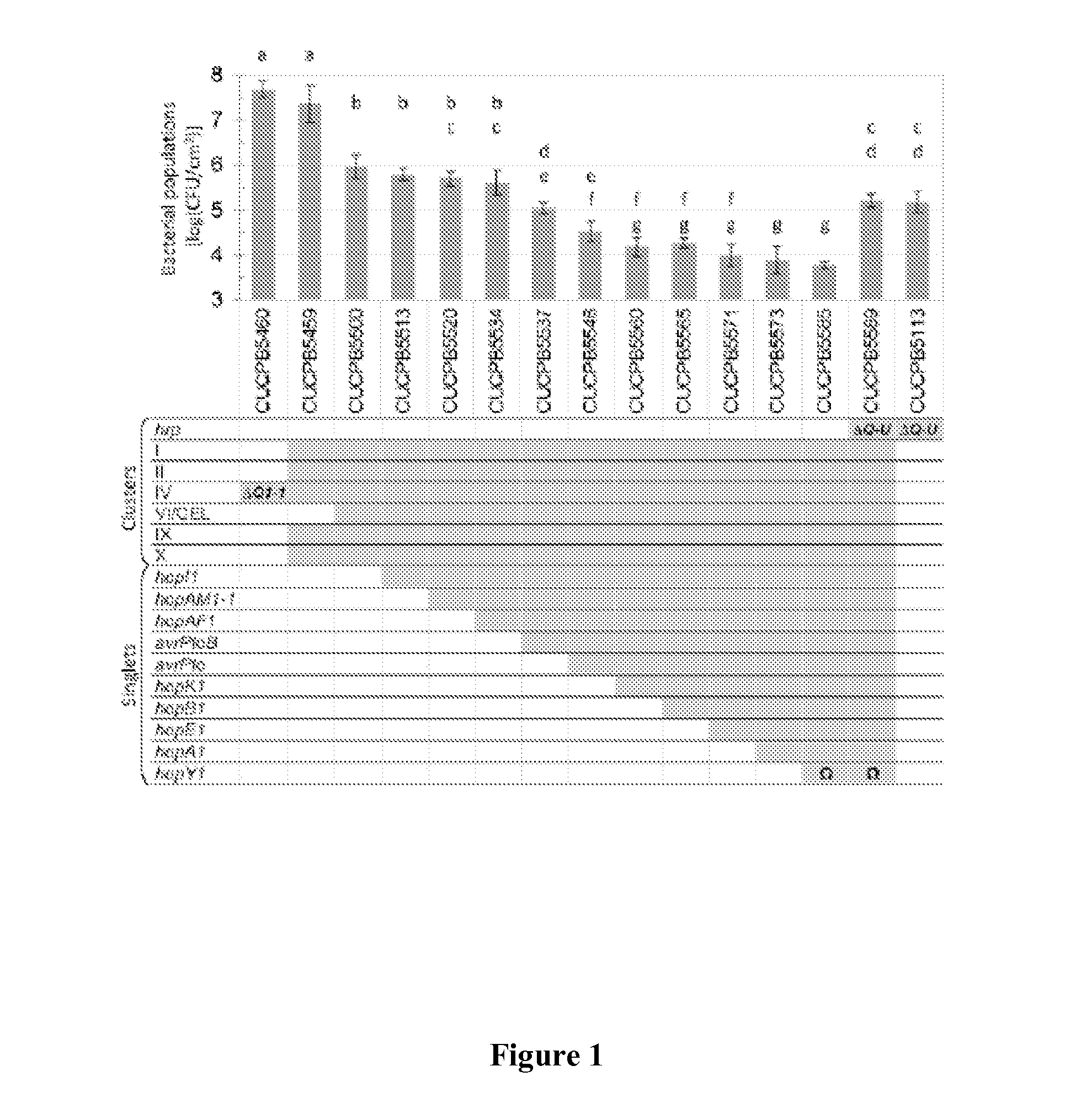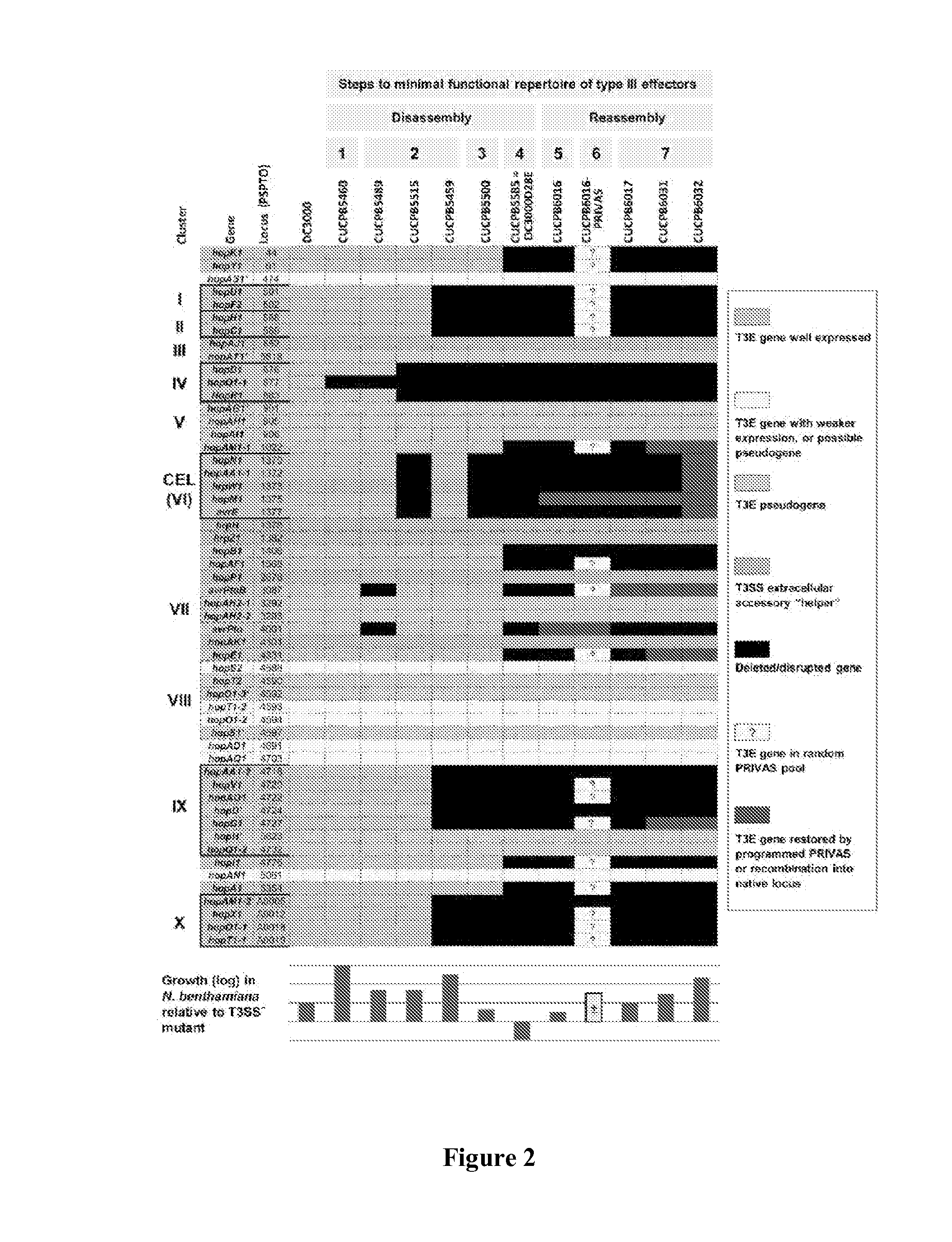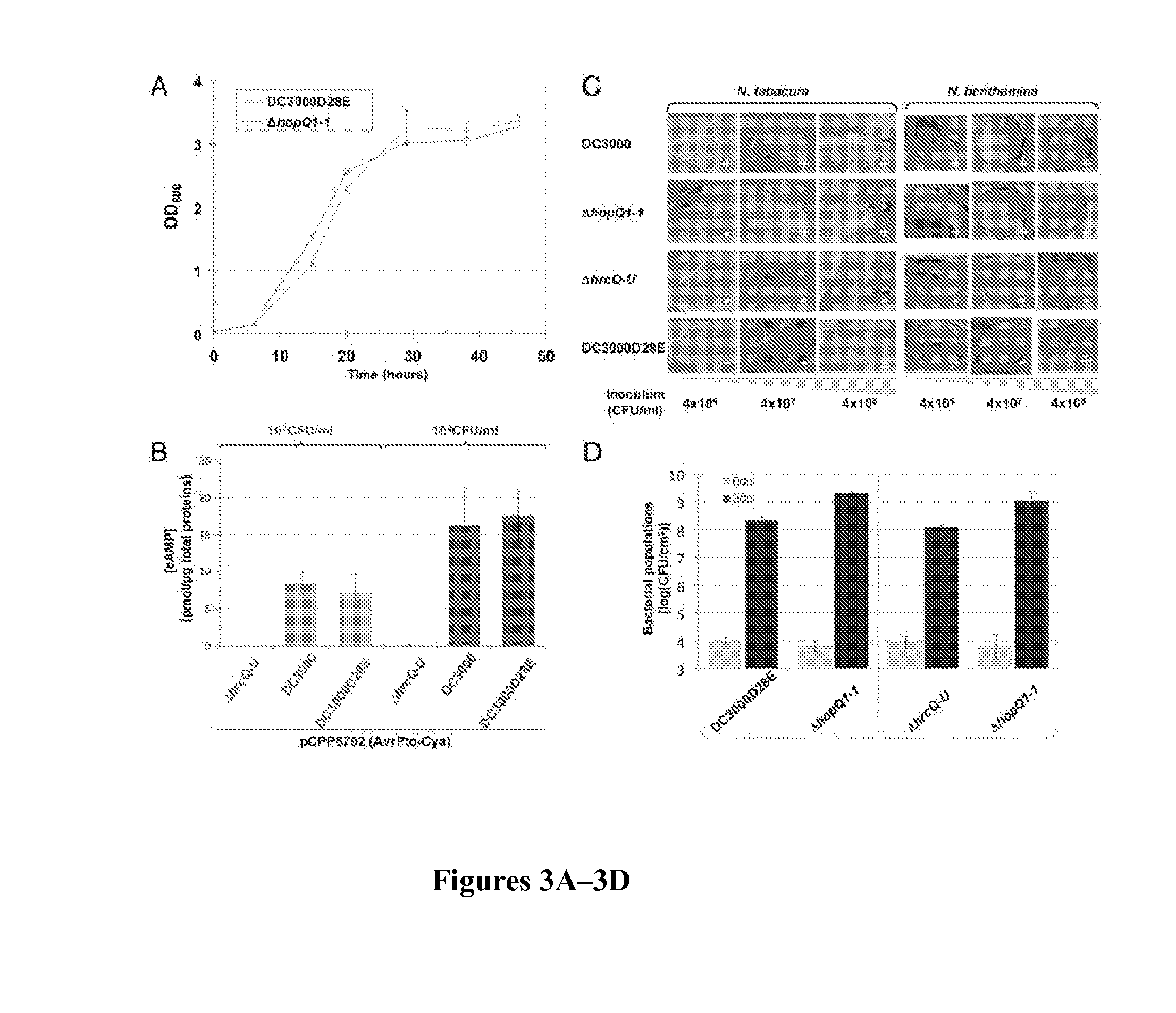Method of dual-adapter recombination for efficient concatenation of multiple DNA fragments in shuffled or specified arrangements
a dual-adapter and fragment technology, applied in the field of dual-adapter recombination for efficient concatenation of multiple dna fragments, can solve the problems of difficult attachment, difficult construction of concatenated sets of dna fragments, and difficulty in assembling dna fragments, and achieve the effect of convenient attachmen
- Summary
- Abstract
- Description
- Claims
- Application Information
AI Technical Summary
Benefits of technology
Problems solved by technology
Method used
Image
Examples
example 1
Bacterial Strains, Culture Conditions, and Virulence Assays
[0069]Bacterial strains and plasmids are described in more detail below Mutations and restorations of complementing genes to native loci were performed with the suicide-eviction vector pK18mobsacB and then confirmed by PCR (Wei et al., “A Pseudomonas syringae pv. tomato DC3000 Mutant Lacking the Type III Effector HopQ1-1 Is Able to Cause Disease in the Model Plant Nicotiana benthamiana,” Plant J. 51:32-46 (2007), which is hereby incorporated by reference in its entirety). Primers for plasmid and mutant construction are given in Table 2. Culture conditions, plant virulence assays, and Cya reporter translocation assays have been previously described (Kvitko et al., “Deletions in the Repertoire of Pseudomonas syringae pv. tomato DC3000 Type III Secretion Effector Genes Reveal Functional Overlap Among Effectors,”PLoS Pathogens 5:e1000388 (2009) and Kvitko et al., “Identification of harpins in Pseudomonas syringae pv. Tomato DC30...
example 2
Construction and Usage of the Vectors for Genomic Gene Replacement and Complementation
[0070]For the construction of the vectors used in this study, the sequences of DNA fragments amplified by PCR and used for cloning were systematically verified to ensure the absence of introduced mutations. Table 3 below summarizes the strains and plasmids used in these Examples.
[0071]The ΔhrcQb-hrcU deletion construct pCPP6201 was obtained by first amplifying the genomic ΔhrcQb-hrcU deletion from CUCPB5113 with P1296 / P2203 and cloning the resulting PCR product digested with BsrBI into the SmaI site of pK18mobsacB. The Ω-SpR cassette was cloned out of this intermediate construct with an XmnI and EcoRV digest and the FRTGmR cassette from pCPP5209 (GenBank accession number: EU024549, which is hereby incorporated by reference in its entirety) amplified using P2259 / P2260 was inserted as a SmaI fragment. pCPP6201 was used to delete hrcQb-hrcU from CUCPB5585 and create CUCPB5589.
[0072]pCPP5893 was create...
example 3
Conception and Experimental Design of the Dual Adapter Recombination and Programmable or Random In Vivo Assembly Shuttle (PRIVAS) System
[0087]Overview of the Use of Flexible, Dual Adapters, which are Central to the PRIVAS system.
[0088]PRIVAS exploits the ability of short, terminal adapters to direct recombination of unrelated DNA fragments in vivo or in vitro. The novel principle of the method is to use a system of dual adapters enabling each unique DNA fragment in a set of interest to be flanked by a pair of hybrid universal-flexible adapters. Universal adapters (UAs) are first attached to the DNA fragments by PCR or other suitable method, such that all fragments in the set are flanked on one end by UA1 and the other by UA2. The flexible adapters (FAs) carry homology to UA1 or UA2, and they also carry unique sequences designed to support recombination among themselves and / or with vectors carrying recombination sites for FA1 and FAn (in a set involving FA1, FA2 . . . FAn). Because t...
PUM
| Property | Measurement | Unit |
|---|---|---|
| Temperature | aaaaa | aaaaa |
| Temperature | aaaaa | aaaaa |
| Temperature | aaaaa | aaaaa |
Abstract
Description
Claims
Application Information
 Login to View More
Login to View More - R&D
- Intellectual Property
- Life Sciences
- Materials
- Tech Scout
- Unparalleled Data Quality
- Higher Quality Content
- 60% Fewer Hallucinations
Browse by: Latest US Patents, China's latest patents, Technical Efficacy Thesaurus, Application Domain, Technology Topic, Popular Technical Reports.
© 2025 PatSnap. All rights reserved.Legal|Privacy policy|Modern Slavery Act Transparency Statement|Sitemap|About US| Contact US: help@patsnap.com



